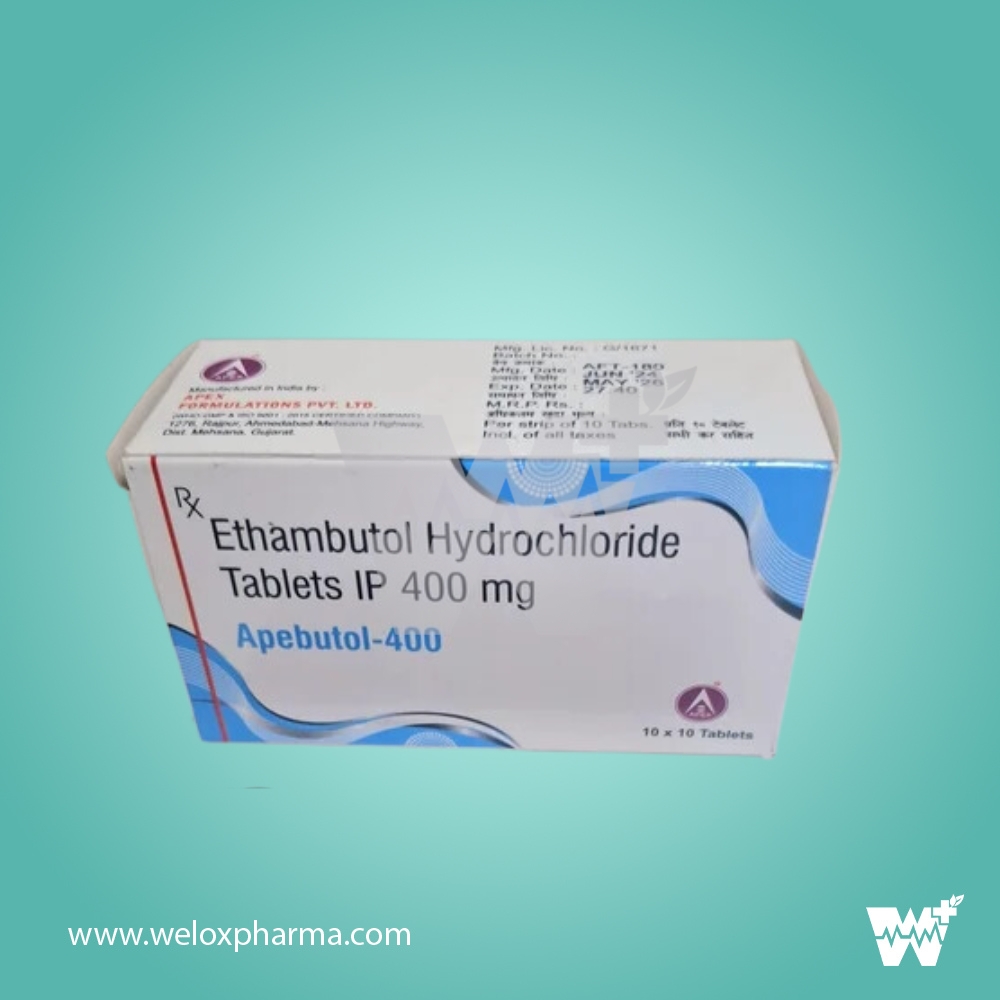



Introduction to Apebutol 400 Ethambutol Hydrochloride Tablets
Apebutol 400 Ethambutol Hydrochloride Tablets are formulated to treat and manage tuberculosis (TB), a serious bacterial infection. These tablets are a crucial part of combination therapy aimed at eliminating Mycobacterium tuberculosis, the bacteria responsible for TB.
Uses of Apebutol 400 Ethambutol Hydrochloride Tablets
Tuberculosis Treatment: Primarily used as a part of combination therapy for active tuberculosis.
Mycobacterium Infections: Effective against other mycobacterial infections, as prescribed by healthcare professionals.
Benefits of Apebutol 400 Ethambutol Hydrochloride Tablets
Effective Against TB: Helps in controlling and treating tuberculosis, improving patient outcomes.
Part of Combination Therapy: When used with other TB medications, it enhances the effectiveness of the treatment regimen.
Prevention of Drug Resistance: Helps prevent the development of drug-resistant TB strains.
Well-Tolerated: Generally well-tolerated by patients, with a favorable safety profile.
Critical in Public Health: Plays a vital role in public health efforts to control and eliminate tuberculosis.
Mechanism of Action of Apebutol 400 Ethambutol Hydrochloride Tablets
Antimycobacterial Activity: Ethambutol Hydrochloride works by inhibiting the synthesis of the bacterial cell wall, specifically targeting arabinosyl transferases, which are enzymes involved in the synthesis of arabinogalactan, a component of the mycobacterial cell wall. This action disrupts the formation of the cell wall, thereby stopping the growth of the bacteria.